Meet the Cagou
Sometimes I wonder if there are many families of animals (or plants) represented by just a sole species. In other words, are there any creatures that are so unique that they have no relatives anywhere in the world? Animals that have somehow survived in certain parts of our planet, but for some reason were not able to do so in other places? Recently I had a chance to meet one such species. It’s a bird commonly called “cagou” (Rhynochetos jubatus, sometimes also spelt as “kagu”, but I’ll continue using the French spelling variant here), a species found exclusively on the main island of the South Pacific archipelago of New Caledonia. Cagou is the sole surviving member of the Rhynochetidae family.
Being an endemic bird and limited to a very small geographical area, the cagou is classified as an endangered species, with the current numbers estimated at somewhere between 1,000 and 2,000 individuals. This large flightless bird had no enemies on an island almost entirely free of mammals (with the exception of flying foxes and, of course, humans), but this changed with the arrival of the Europeans in the 19th century who were quick to introduce common domestic animals into the newly colonised territory. This has decimated the cagou’s population numbers. Although the recent efforts at preserving the animal have been very successful, the process is excruciatingly slow as the female cagou lays only one egg per year.
The easiest place to observe this emblematic animal (the sportsmen of New Caledonia are often referred to as “les cagous”) is in the Parc zoologique et forestier in Nouméa, the territory’s largest city. This excellent zoo featuring many other endemic species from the archipelago has been at the forefront of the cagou conservation efforts, breeding the birds and releasing them in to the wild. As of September 2017, the zoo had a total of five birds in two separate enclosures – a couple with a very young chick in one and a mother with a two-year old juvenile in the other. The birds are habituated to human presence and are relaxed about the visitors around them. The best time to arrive is at 3pm when they get their daily feeding – a mixture of earthworms and insects. The cagou is entirely carnivorous, feeding also on small lizards and fish.
For those wanting to observe the bird in its natural habitat, the best place by far is the Parc provincial de la Rivière Bleue, a nature reserve about an hour’s drive from Nouméa. I had a chance to see the cagou in this park back in 2007 during my first visit to New Caledonia. At the time, spotting the bird wasn’t easy at all and I had to join a guided tour of the park with experienced rangers who were able to locate them. However, things have improved quite dramatically in the last ten years and nowadays visitors report cagou sightings frequently while simply driving around the park. In fact, you’ll be unlucky not to see one. This is excellent news as it means that the conservation work done in the park, especially the effort to remove the pests, has borne fruit.
The cagou is a monogamous bird, forming a relationship that lasts a lifetime. Although the bird’s size is about the same as that of a chicken, the cagou eggs are surprisingly small, while the incubation period is unusually long – about six weeks. The pair shares the incubation duties, working in 24-hour shifts. It takes some three years for the chick to become an adult, but it sometimes stays with the parents for several more years before forming a couple of its own. Although the bird spends most of its waking time on the ground, it often sleeps higher up in the trees; as it cannot fly, it first needs to locate a tree with a diagonal trunk to climb up before finding a resting place on a horizontal branch. The cagou’s life expectancy is around 20 years.
(This page has been viewed 371 times.)
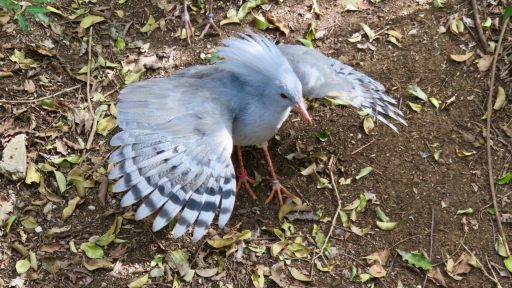
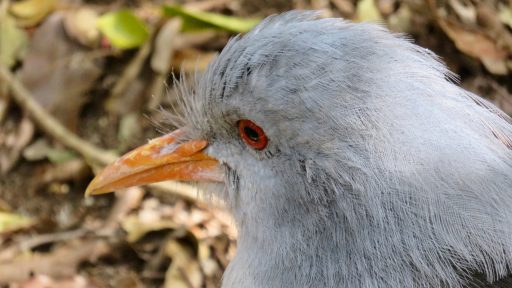
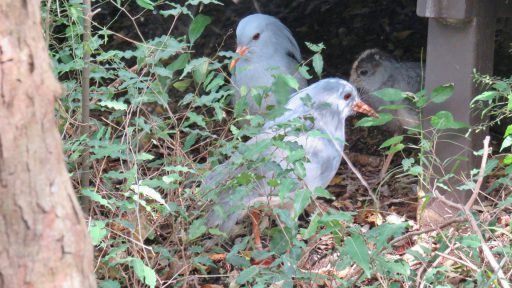
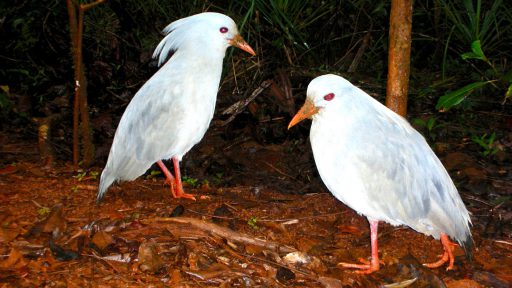
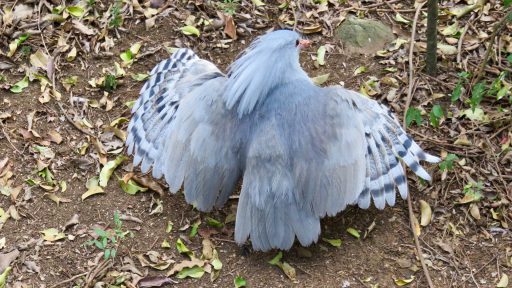
Leave a Reply